History
of the KNGMG
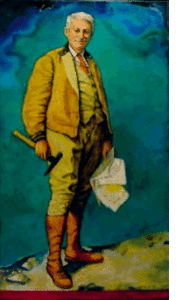
Mr. dr. ir. W.A.J.M. van Waterschoot van der Gracht, first president of the KNGMG, painted by his daughter Gisèle d’Ailly
Previous historical overviews of the KNGMG have been compiled for the 50-, 60- and 75-year anniversaries by H.J. de Wijs (1962), J.W.R. Brueren (1972) and E. den Tex (1987), respectively. The latter review is included in the 100-year jubilee book of the KNGMG by Aad van Zuuren and Ab van Adrichem Boogaert (2012) and has been used extensively for this summary.
The KNGMG was formed from a merge of the ‘Nederlandsche Mijnbouwkundige Vereeniging’, founded in 1904, and the ‘Nederlandsche Geologische Vereeniging’, founded in 1911. It was the eminent geologist/mining engineer and jurist W.A.J.M. van Waterschoot van der Gracht who brought the two societies together in March 1912 as the Geological-Mining Society for the Netherlands and Colonies. He also became the first president of the new society.
The purpose of the society was (and still is) to promote earth sciences, to look after the interests of its members, to strengthen contacts between members and to promote recognition of the importance of the earth sciences to society.

Membership rose rapidly to nearly 500 in 1925 and reached a maximum of about 1550 in the mid-nineteen-eighties before gradually declining to a stable 700 in 2023. Much of the decline is related to the closing of coal mines in the nineteen sixties and the disappearance of mining engineers in Dutch industry. Many engineers became members of the Royal Institute of Engineers (KIVI).
Departments, Sections, Associations and Committees
The society had a main board of three (later five) persons, while the merged Geological and Mining Societies retained their own Sections. These retained their own boards who, together with the main board, formed the Board of Directors. On the occasion of its fortieth anniversary in 1952, the society received the predicate ‘Royal’ and was renamed the Royal Dutch Geological Mining Society, KNGMG.
The Society was completely reorganized in 1968-1970 with the introduction of associations (‘Kringen’) and regional departments. The old Geological and Mining Sections were thereby abolished. The Kringen represent the various earth science disciplines within the Society. The Board of Directors was abolished and in its place came a Society Council composed of 15 members drawn from all the Kringen and Departments in order to promote the integration of the various parts of the Society. The Society Council also had an advisory role to the Executive Board of the Society. Under this new structure, nine new Kringen were established during 1969-1978 in addition to the already existing Geophysical Kring. The Kringen have their own boards, rules and members. Originally it was stipulated that the members of the Kringen also had to be members of the KNGMG, but this has not been applied for decades. With the introduction of the regional Divisions “North Netherlands” and “Limburg,” an old wish of many members was fulfilled. Three new committees were also established: the Science Committee (for advice on teaching programs, nominating awards and organizing the annual Staring lecture), the Contact Committee (for social and professional affairs and cooperation with academia) and the Excursion Committee.
The Science Committee was abolished in 1983. The Contact Committee was long successful in bringing members together by organizing annual contact days. The contact days were replaced in 1999-2000 by “outdoor days,” organized by a new “Networking Outdoor Day” committee. The Excursion committee was abolished after excursions planned to Oman and Solnhofen in 2007 and 2008 respectively had to be cancelled due to lack of interest. With this decision there was also the important realization that many excursions organized by the Kirngen are also generally open to all members of the KNGMG. In 1993, the Professional Interests Committee was created. This committee works closely with the European Federation of Geologists (EFG) and is responsible for, among other things, the professional recognition of earth scientists (accreditation) as well as highlighting professional opportunities for earth scientists and various courses.
The two regional divisions were renamed Kringen in 2001, but the Kring Limburg could no longer be saved. This is probably related to the dissolution of the Geological Bureau Heerlen of the National Geological Service after the merger with TNO in 1997. The Geophysical Kring, the oldest of all circles, was abolished in 1989 due to lack of members seeking affiliation with the EAEG (European Association of Exploration Geophysicists). The other Kringen successfully persisted, with the Hydrological Kring growing into a fully independent professional organization in 1990: the Dutch Hydrological Society. The Geochemical Kring left the KNGMG in 2009 to join the Environmental Chemistry Section of the KNCV (The Royal Dutch Chemical Society).
Current associations (Kringen) include the Network for Women in Earth Sciences GAIA, the Regional Kring North and six specialty Kringen: the Palynological Kring, the Sedimentological Kring, the Paleobiological Kring, the Petroleum Geological Kring, the Engineering Geological Kring and the Dutch Earth Materials Kring (formed in 1991 from a merger of the Mineralogical, the Petrological and the Mineralogical Kringen).
Awards and special lectures
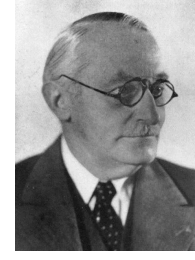
In 1950, the W.A.J.M. van Waterschoot van der Gracht Penning was introduced. The Award, named for the first president of the KNGMG, is the highest honor that can be awarded in the Netherlands to exceptionally deserving earth scientists.
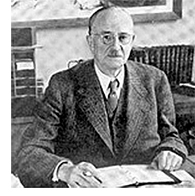
In 1994, the Escher award was introduced, named after the Leiden Professor of General Geology Prof. Dr. B.G. Escher (1885-1967). The prize may be awarded annually to the author(s) of the graduation thesis in the (applied) earth sciences in the broadest sense of the word.
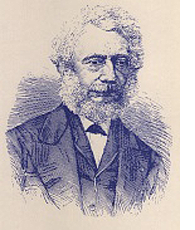
In 1964, Ph.H. Kuenen introduced the idea of commemorating the birthday of the pioneer of geological research in the Netherlands, Dr. W.C.H. Staring (1808-1877), with a special lecture held once a year, preferably around Oct. 5, Staring’s birthday.
Publications
From its origins, the Society has strived to promote scientific and technical publications in the field of earth sciences. This has resulted in a large number of special and regular publications. Yearbooks were published from 1913 to 1937. From the beginning, the Society published the Treatises of the Geological-Mining Society in two parallel geological and mining series. The Mining Series Treatises were discontinued in 1963 due to the closure of the coal mines and totaled five volumes. The Geological series had 32 volumes including monographs on Dutch New Guinea and the “Oman Mountains”. The last volume was the Stratigraphic Nomenclator of the Netherlands (1980). From 1931 came the regular journal ‘Geology and Mining’. The archive of this publication is available on the website. The Newsletter was introduced in 1975 with current professional information, earth science news and events as well as book reviews and information about lectures and courses.
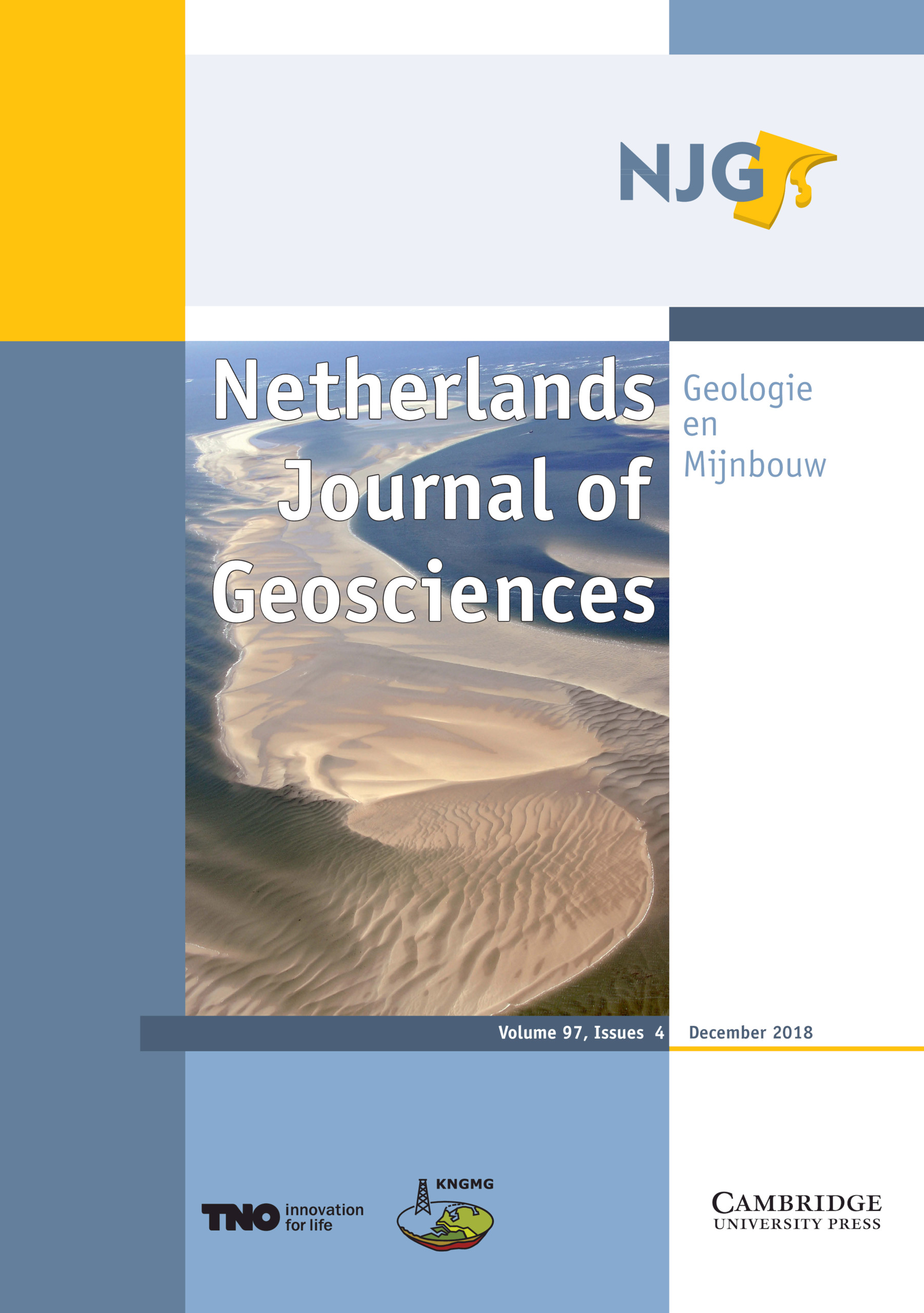
Geology and Mining merged in the 1990’s with the Mededelingen van de Rijks Geologische Dienst and the Nederlands Instituut voor Toegepaste Geowetenschappen (NITG-TNO). The new professional journal has been published since 2000 as ‘the Netherlands Journal of Geosciences (NJG)‘ with Geology and Mining as its sub-title. The NJG is governed by the ‘Netherlands Journal of Geosciences’ Foundation with representation by two members of the KNGMG and two members of TNO. The journal focuses on earth science articles on the Netherlands, the North Sea and adjacent areas. It is published quarterly and has been freely available online to KNGMG members since 2005.
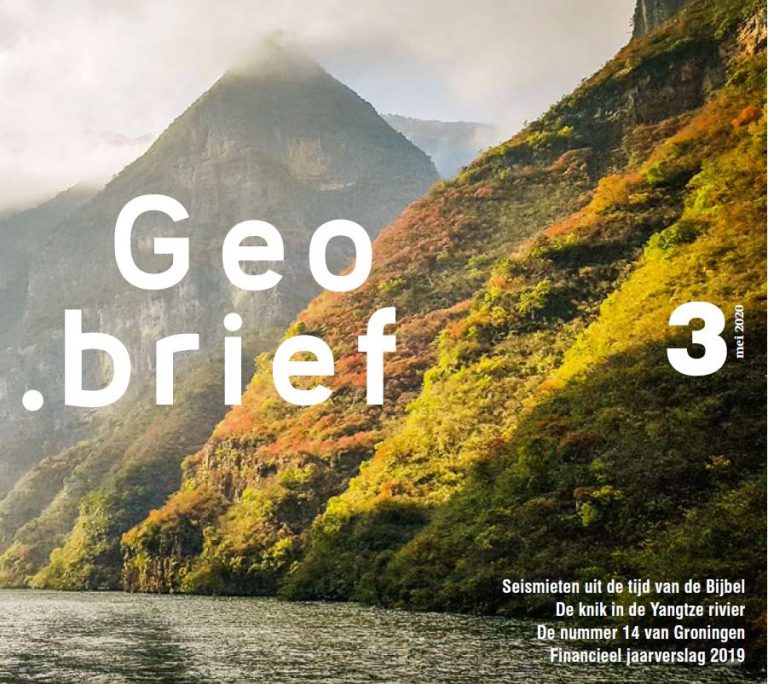
The Newsletter was replaced in 2007 by the Geo.brief, adapted to the possibilities of the time with professional design and also available online for members. The Geo.brief has 8 issues per year and has become an attractive news platform for members of the KNGMG. The entire archive is available to members on the website.
Starting in 2005, there was the KNGMG website, www.kngmg.nl, redesigned and with more functionality in the anniversary year of 2012 and then completely revised in 2016. In 2010, social networking came with a KNGMG LinkedIn Group.
Affiliations and academic collaboration
The KNGMG represents the “European Federation of Geologists” (EFG) in the Netherlands. This organization also administers the Euro Geologist (EurGeol) title for certified geologists.
The KNGMG is also affiliated with the EAGE (European Association of Geoscientists and Engineers and the AAPG (American Association of Petroleum Geologists), the largest international geological organization in the world, founded in 1917, in part by the Society’s honorary member Willem van Waterschoot van der Gracht.
Contacts with academia are strong, specifically with student organizations of the geological and mining engineering faculties in the Netherlands. Conferences and symposia are regularly organized to which the KNGMG contributes grants. These include the Earth Science Career Day, first organized in 1999 by GeoVUsie, the student organization of the VU in Amsterdam. Another activity in which the KNGMG is heavily involved is the Dutch Earth Science Congress (NAC) in Utrecht.
The KNGMG is 110 years young. With a good reputation in the international earth sciences, we can look to the future with confidence. Standing still is not an option. After all, there are those unchanged goals of the KNGMG that have a strong link to ever-increasing connectivity and ever-evolving developments in information technology: to promote the earth sciences, to represent the interests of members, to strengthen contacts among members, and to promote recognition of the importance of the earth sciences to society.
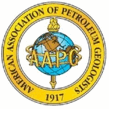


References
- Brueren, J.W.R., 1972. Zestig jaren KNGMG. Geologie en Mijnbouw, 51, 159-216
- Den Tex, E., 1987. The Royal Geological and Mining Society of the Netherlands. In: Visser, W.A., Zonneveld, J.I.S. & Van Loon, A.J. (eds), Seventy-five years of geology and mining in the Netherlands (1912–1987). Royal Geological and Mining Society of the Netherlands (The Hague): 27-32.
- De Wijs, H.J., 1962. A dive into the history of the Royal Geological and Mining Society of the Netherlands. Geologie en Mijnbouw, 41, 143-146
- Van Zuuren, A. and Van Adrichem Boogaert, A., 2012. KNGMG, a historic overview. In: Floor, P. (ed.), Dutch Earth Sciences, Development and Impact. Roayal Geological and Mining Society of the Netherlands, 1912-2012 Centenary volume, 10-17
Top picture © Earthfocus by Jeroen Peters copyright
